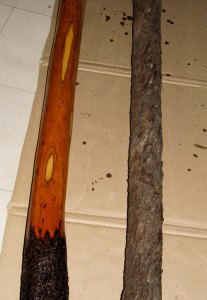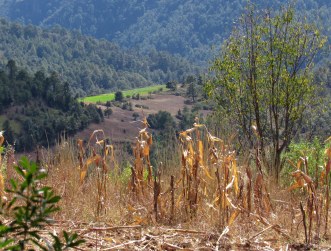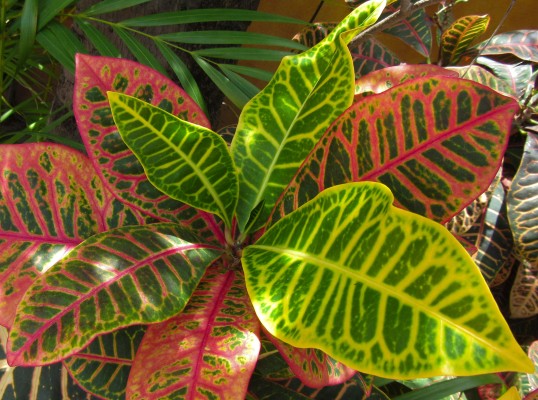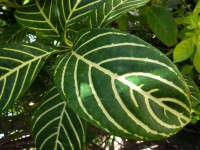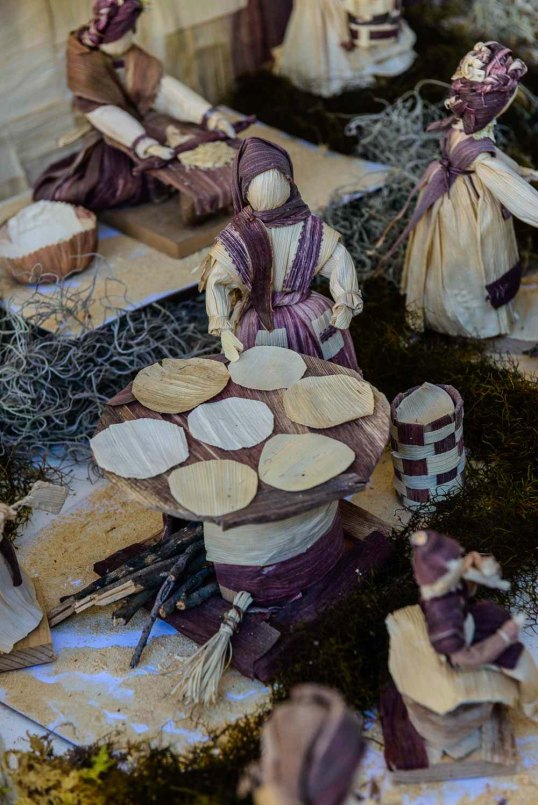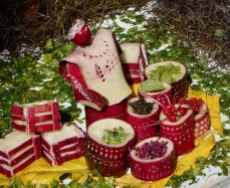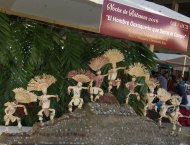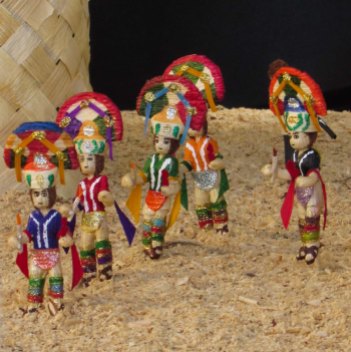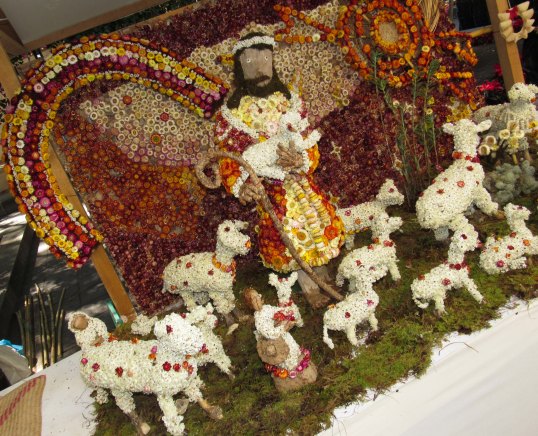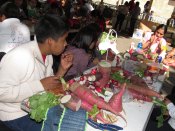Alaska, Mexico and Beyond…
“One Journey Leads to Another”
Ailsa’s Travel Theme: Balls
“DARK SIDE OF THE RINGS: This spectacular view looks down on Saturn’s northern regions, with its pole still in the darkness of the northern hemisphere winter. The rings cast a band of shadow across the gas giant world.”
“Michael Benson’s Otherworlds, Visions of our Solar System” is the title of a current exhibit in the Queensland Museum, Brisbane, Australia. This is a photo of one of his magnificent photographs.
Mosaic composite photograph. Cassini, 20 January 2007. The quotation was the museum’s explanation.
On a much smaller scale, thousands of tiny crabs created millions of tiny balls of sand!
Boyne Island, Queensland, Australia.
Making a Didgeridoo
Sanding is but one step in transforming the trunk of a certain type of eucalyptus into a didgeridoo, that most uniquely Australian musical instrument.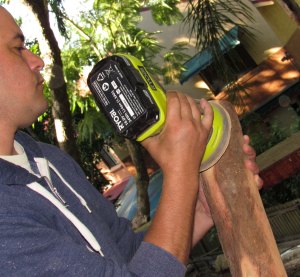
During my recent trip to Brisbane, Australia, to visit my son and his wife, I was fortunate to watch the whole process and to meet Glen Lindh, Dominic’s friend who taught him how to make a “didge.”
Step one is to visit Glen, who is one of the Wiradjuri (alternate spelling: Waradjuri) aboriginal people, where we sort through a pile of blanks (chunks of trunks with the bark still attached) to choose one of the appropriate size and shape. Length and shape both affect the sound of the finished instrument. Glen buys the blanks from another man who cuts them in an area of New South Wales. The tree is called mallee, which refers to its particular growth habit of multiple trunks growing from an underground lignotuber.
On the right is a blank and the left a finished didge.
The next step is to saw off any uneven ends. Notice how the interior of the wood has been conveniently hollowed out by termites! Using a draw knife, Dominic removes most of the bark and some of the underlying layer of wood, revealing the creamy color of the inside layer. Traditionally all the bark and darker layer are removed, which leaves a clean slate for painting aboriginal designs. Glen’s didges are made in this style, but during our visit I was so focused on listening to his fascinating stories and history that I forgot to take photos! Not being an aboriginal person, Dominic chooses not to paint their designs but rather show off the contrasting colors and textures of the wood.
Click on any photo to enlarge or see a slide show.
The inside of the wooden cylinder is sealed with “Bond-Crete,” which is a concrete sealer that protects the wood and helps prevent cracking.
After the sealer has dried to a clear finish, several coats of varnish are applied, which protect the wood and enhance the colors and grain. The difference is striking!
The last steps are to fashion a mouthpiece of beeswax and dip the top section of the didge into melted beeswax to make a smooth surface. In these photos Dominic’s friend Mark is forming the mouthpiece on the didge that they have made for him.
Last step: Master the required circular breathing and make music! Mark has been playing a didgeridoo since he was 10 years old, so he has many learning tips for Dominic. It seems to me that making a didge is much easier than playing it!
Cee’s Photo Challenge: Which Way in Brisbane
The city center of Brisbane, Australia offers many modes and routes of transportation: foot, vehicle or boat and bridge, highway or river.
Hiking Oaxaca – El Carrizal 2
El Carrizal, located high in the Sierras about 2 1/2 hours from the city of Oaxaca, is one of our favorite hiking/weekend excursion destinations. Some of the local delights from the trip last year can be viewed here.
View of the village of El Carrizal from a trail side mirador (lookout).
A highlight of this visit was learning about three bakeries that produce flat, round and quite tasty loaves, which we savored at every meal! The bread is totally local – growing the trigo (wheat), separating the grain, grinding into flour, mixing, and finally baking.
Click on any photo for a slide show.
The bakery below is owned by two families who bake bread twice a week.

The kneading of bread was in this enormous trough made from one tree, smoothed with years of work.
Photo and caption by Lorna Stone. Thanks, Lorna!
Corn is another product totally grown and processed locally. Kernals are dried, ground, and made into delicious tortillas, and the husks and stalks are fed to animals. Maybe the husks are even used for tamales! As we were walking along the dirt road toward the mirador, these people waved us over to chat. The corn is typically put on the flat rooftops to dry then removed from the cobs and stored for grinding into the meal or flour for tortillas.

The people of El Carrizal are exceptionally friendly and welcoming. Everyone agreed that these people are what made such a magical weekend! We’ll definitely be back next year.
Ailsa’s Weekly Travel Theme: Leaves
Lush gardens surround the courtyard of Casa Mañana, my favorite of all hotels, which is located in Bucerias, Mexico. During our last visit I spent the afternoon wandering the grounds admiring the huge variety of stately palms wrapped with climbing vines, peculiar tropical flowers and colorfully patterned leaves.
Click on any photo to enlarge or see slide show.
Alaska shows off colorful leaves too!

To enjoy more photos of leaves, click on the link below:
Noche de Rabanos (Night of Radishes) 2016
Noche de Rabanos (Night of Radishes) is a splendid one day creative extravaganza unique to the city of Oaxaca. Imaginative people from around the state have been working on designs for many months, and on December 23 they display their artwork for the enjoyment and amazement of thousands of onlookers, plus they have a chance to win a prize!
Click on any image to enlarge or see a slide show.
We begin our day by eating breakfast in one of the outdoor restaurants that surround the zócalo, the main plaza of Oaxaca where the event takes place. We enjoy watching people construct and put the finishing touches to their depictions of daily life, history, religion, and culture. Some of the radish carvings are done at the last minute! Every tiny piece of the work must be of natural materials – no wire or plastic – and most of the radish figures are held together with toothpicks.
There are three categories of materials: specially grown giant rabanos (radishes), flor inmortal (looks like what I know as straw flowers), and totomoxtle, or corn husks.
Some photos show entire displays so you can see how elaborate they are, and some are of small sections to show the incredible detail. Photographer friend Rick Impett contributed some excellent photos – thanks, Rick!
MERCADOS (MARKETS)
MUSIC AND DANCING
RELIGIOUS LIFE
WEAVERS
NEFARIOUS CREATURES!
Living lives surrounded with artisans creating textiles, carvings, metalwork, pottery, painting, music and dancing, children of Oaxaca learn to become artists, musicians and craftspeople at a very young age. It’s wonderful to see!
SPECTACULAR PIECE and the ARTIST
Cee’s Odd Ball Challenge #50: Alternate Entry
Houses in Oaxaca lack chimneys. But never fear, Santa will find another way to deliver those gifts!

 Guanajuato, Mexico
Guanajuato, Mexico

